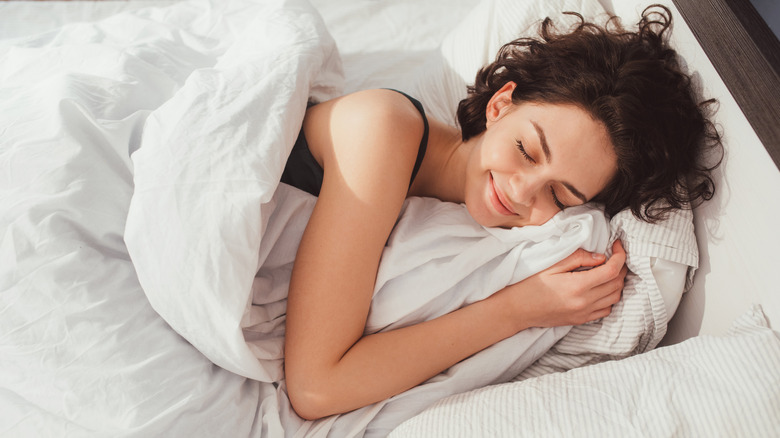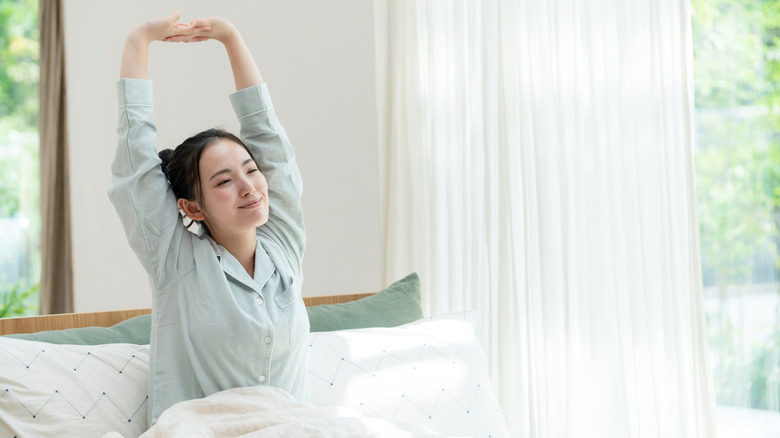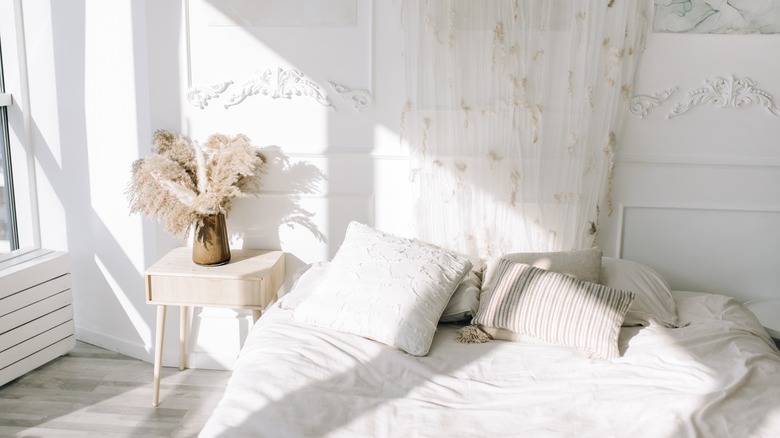Light Therapy Is Good For Your Sleep. Here's Why
It can be frustrating when you toss and turn all night just to wake up and realize you've gotten no sleep. Even though it may seem like nothing is giving you a good night's rest, there may be a simple solution to your problem.
Light therapy may sound like it would keep you up all night, but its benefits include helping you sleep well at night. According to the Sleep Foundation, light has a strong effect on three important aspects of our sleep. These are our circadian rhythms, melatonin production, and sleep cycles. Since light is the most important key to each of these, it certainly plays a role in getting them realigned.
Although there are many external factors that may cause your sleep issues, it's worth taking a look at how light therapy could help balance your sleep schedule once more. Including sleep, light therapy also has many benefits pertaining to our overall mood and mental clarity.
How light therapy improves our sleep
According to Sleep Education, one of the ways light therapy can improve our sleep is by improving our circadian rhythm. Many sleep disorders, including insomnia, are caused by a disrupted circadian rhythm. Just like a clock tells us the time of day, our circadian rhythm is an internal clock that tells our body when it's time to be awake and when it's time to go to bed. Sleeping disorders, then, mean that our body isn't properly processing this information and, therefore, is keeping us up at night. Light therapy involves using a safe amount of light to tell our bodies that it's time to be awake. By continually using light therapy daily at the right time, you reset your circadian rhythm.
Conditions like depression and seasonal affective disorder can also cause disruptions in your sleep. Using light therapy can help simulate sunlight in a way that can ease these disruptions. Since seasonal affective disorder, or SAD, is partially caused by the shortening of the day in winter, this simulation of sunlight can help in the evening when it's still early in the day but dark outside (via Verywell Health).
If you or someone you know is struggling with mental health, please contact the Crisis Text Line by texting HOME to 741741, call the National Alliance on Mental Illness helpline at 1-800-950-NAMI (6264), or visit the National Institute of Mental Health website.
Things to keep in mind about light therapy
When deciding whether light therapy is right for you, there are a few things to take into account. Light therapy is a great way to help reset your sleep but shouldn't be used as the only solution. Using light therapy should be considered as an add-on treatment for sleep disorders. When using a light therapy box or simulator, you should use it around 14 to 16 inches away from your eyes — and not directly in your eyes. Be sure to use the light box in the morning or the early evening for to reap its full effects (via Healthline).
According to The Zoe Report, you can also use light therapy by simply catching more sun. If you find yourself working from home more often, utilize the daylight by grabbing breakfast outside or near a window. If you plan to use light therapy for your sleep, you should plan to catch some sun or light for around 30 minutes to two hours a day, depending on how strong the light is. When nighttime rolls in, limit the amount of light you receive to signal to your body that it's time to wind down for sleep.


